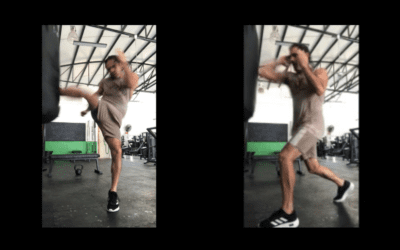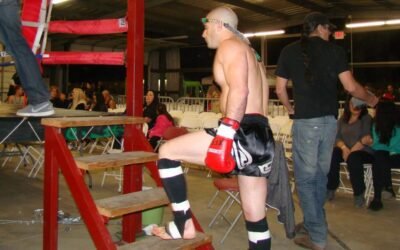These nutrition principles are a guide to eating healthy and having enough energy to train your best and perform your best in your daily life. Try all of them. Use the ones that work for you. They will help with weight loss while also boosting energy and immunity.
Eat at home as much as you possibly can.
- Prepare your own food. This gives you much more control over what you put in your body. Minimize the amount you eat out if you are trying to lose weight.
Intermittent fasting
- Don’t eat between 10 a.m. and 7 p.m.)
- Exception: if you finish a workout at or after 7 p.m., eating something after is okay. I get hungry after I train and have a hard time sleeping on an empty stomach. Sleep is the top priority, so eating something after a night workout is okay because it improves sleep and aids recovery by providing your body with nutrients.
24-hour fasting
- If you are coming off a heavy consumption period, such as a cheat day or a cheat weekend, a 24-hour fast can help reset you. For example, if you go on vacation and indulge in food and beverages, doing a 24-hour fast when you get back is an excellent way to detox, reset and get back into your regular routine
- Start the fast after dinner, so it’s easy to sleep. Then don’t eat the next day until dinner.
- Some light cardio is okay (walking, light jogging, shadowboxing), but I don’t recommend hard training while fasting.
Work out first thing in the morning
- Training first thing in the morning activates your metabolism and energizes you all day.
- If you don’t train first thing in the morning, get at least get 30 minutes of light cardio before you eat (i.e. walking the dog, walking, or riding your bike)
Walk 30 minutes per day
- Walk as much as possible. Walk the dog. Walk to get groceries. Walk to work. Walk in the park. Go for hikes. Walking daily is a great lifestyle habit to adopt.
Ride a bike
- Riding a bicycle is a great way to build your legs and burn calories while accomplishing your daily commutes. If you install a carrying device on your bicycle, you can use it to get groceries and do other errands. The bike makes it easier to avoid traffic and parking hassles as well.
- If you can’t walk or ride a bike where you live, then consider moving. I have moved multiple times in my life specifically to walk and ride my bike more (to work, get groceries, etc.). Walking and riding are great calorie burners and are also a lot of fun. Avoiding a commute saves time, so you have more time to train.
Cut sugar
- No processed or refined sugars. This eliminates basically everything in the aisles at the grocery store. No “cardboard carbs”- carbs that come in a cardboard box.
- No added sugar allowed, ever. (check the ingredients)
- Sugar from fresh fruit is good. Eat as much fresh fruit as you want, and eat a variety. No processed fruit (i.e. frozen/pre-packaged).
- Use organic brown sugar for things like coffee and cocktails. No simple syrup or white sugar. Use as little as possible.
- To lose 10-15 pounds quickly, cut sugar entirely for ten days. No carbs. No fruit. No milk. Only proteins and vegetables. Thirty minutes of light cardio per day.
- Limit desserts and cheat meals to heavy training days (i.e. whichever day you train legs). If you have a dessert or a cheat meal at night, exercise first thing in the morning before you eat (even if it’s just a 30-minute walk).
- Don’t keep sweets or desserts in your house. Make yourself go out for them if you must have them.
Carb cycling
- Three days low carbs (60 grams per day), one day high carbs (260 grams). These numbers may vary slightly depending on your size and exercise output but try these first.
- Carb cycling + intermittent fasting + 60 to 90 minutes of daily training will cut fat and lean you out quickly. Try it for six weeks.
Eat all your colors
- Eat various fruits and vegetables in as many different colors as possible. They all have different vitamins and will help boost your immune system.
- Choose the brightest and most colorful vegetables in every color.
Eat proper portions
- Eat until you are no longer hungry, not until you are stuffed. If you have a big meal in front of you, don’t try to eat it all. Save the rest until the next time you are hungry.
- Your plate should be roughly 1/2 fruits and vegetables, 1/4 carbs and 1/4 protein
Carbs
- Choose from rice, brown rice, sweet potato, potato, pasta, whole grain bread
- Some people have strong opinions about avoiding bread, rice, and pasta. I eat all of those things. They’re important staples of my diet; I wouldn’t function well without them. It’s the portions and the timing that are important. Eat small portions, and only eat them before or after a workout (when your body needs immediate, fast-acting fuel for exercise or recovery).
Proteins
- Choose from chicken, fish, steak, eggs, pork, ground beef, ground chicken, seafood
- Fattier meats like bacon and sausage are okay and even good sometimes (depending on portions and timing). Replace them with turkey bacon or chicken sausage. Monitor the sodium content of these products. Choose the one with the least saturated fat and the least sodium. Some of them have very high sodium.
Fruits and vegetables
- Your shopping cart should be primarily fruits and vegetables.
- Eat as many different colors of fruits and vegetables as possible. Each color has different nutrients.
- Choose the brightest colored vegetables because these have the most nutrients.
Eat one salad per day
- If you don’t eat a salad, then at least do a smoothie with various fruits and vegetables to ensure you are getting your vitamins for the day.
- I see no downside to a salad and a smoothie daily. I’ve never met anyone who got fat or sick from eating too many fruits and vegetables.
Food prep
- Cook with olive oil or grapeseed oil
- Grill over the fire as much as possible
- Prepare extra food when you cook. This gives you ready-made healthy meals when you are busy later in the week.
Squeeze your own juice
- Never buy pre-packaged fruit juice at the grocery store. Always squeeze your own.
Daily smoothies
- The ingredients you put in your smoothie matter greatly. Do not use yogurt with any fat or any added sugar. Do not use any premade fruit juices. Do not use frozen fruits. Only use fresh ingredients. Failure to use the right ingredients will turn your smoothie into a calorie bomb loaded with processed sugar – so follow the rules.
- Basic ingredients
- Fresh squeezed fruit juice (never store-bought)
- Fresh fruit of your choice
- Fresh vegetables of your choice
- Ice
- Nonfat Greek yogurt (no added sugar)
- Put ingredients into a blender and liquefy. Include the pulp from the juice – there are good fibers in it.
Break fasts (long periods without food) with protein
- The day’s first meal should have protein, and the first meal after a fast should have protein. It can be a protein shake or smoothie.
Timing of meals
- Exercise before your first meal, even if it’s just a 30-minute walk. Exception: If you are training hard first thing in the morning, you can eat something light such as oatmeal with fruit or a peanut butter and banana sandwich, at least 20 minutes before training. I typically have something small before a hard morning session, then eat my first full meal afterward.
- If you exercise later in the day, eat something (carbs) at least 20 minutes before so you have the energy to train.
- Eat something (carbs) within 30 minutes after training.
No processed or frozen foods
- No frozen or prepackaged foods, including fruits and vegetables. Eat fresh food. If you must freeze food, buy it fresh, then freeze it yourself.
- There should only be one ingredient on the label of your foods. For example, when buying peanut butter – only buy natural peanut butter that has a single ingredient on the label: peanuts.
⦁ On days you exercise less, eat less.
⦁ You don’t need to eat as much. You’re not burning as many calories.
Proper nutrition gives you more energy
- Consuming proper nutrition gives you more energy, not less. At no point should you feel like you are starving yourself or don’t have enough energy to get through the day. If you are hungry, eat something. But eat something healthy. If you don’t want anything healthy, maybe you aren’t that hungry.
Desert
- Replace dessert (candy, ice cream) with fruit, yogurt, apples, and all-natural peanut butter.
- If you eat a dessert at night, train the following morning before breakfast.
Cocktails
- No simple syrup or other syrups. Use brown sugar instead.
- Fresh squeezed juices only. No store-bought juice.
- Fresh garnishes only
- No premade mixes
- Use quality spirits
- Drink a glass of water for each cocktail you consume
Be disciplined
- Your eagerness to eat healthily will increase as you start seeing more and more results.
- Exercising a small amount of discipline now will lead to results, motivating you to keep going. You will increasingly appreciate good eating habits the longer you keep them.
Stay hydrated
- Consume water throughout the day. If your urine is yellow, you are dehydrated – so drink some water until your urine is clear.
Take stretch breaks when seated for long periods
- Take stretch breaks every 20 minutes. Don’t sit for over 20 minutes without standing up and moving around.




0 Comments